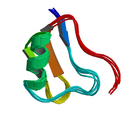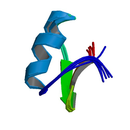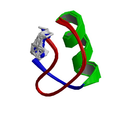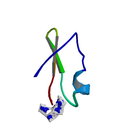
Browsing Toxins
Displaying toxin 3526 - 3550 of 3678 in total
| T3DB ID | Name CAS Number | Formula Weight | Structure | Type | Mechanism of Toxicity |
|---|---|---|---|---|---|
| T3D0191 | Hydrogen sulfide 7783-06-04 | H2S 34.081 g/mol |  |
| Although very pungent at first, hydrogen sulfide quickly deadens the sense of smell, so potential victims may be unaware of its presence until it is too late. Hydrogen...more Number of Targets: 1 |
| T3D0259 | Phosphine 7803-51-2 | H3P 33.998 g/mol |  |
| Phosphine inhibits cytochrome c oxidase, preventing mitochondrial oxidative phosphorylation. This non-competitive inhibition prevents cellular respiration and leads to...more Number of Targets: 20 |
| T3D0084 | Hydrazine 302-01-2 | H4N2 32.045 g/mol |  |
| At least two mechanisms of action have been observed. One involves the direct binding of those hydrazines with a free amino group (hydrazine and 1,1-dimethylhydrazine)...more Number of Targets: 0 |
| T3D0771 | Methanol 67-56-1 | CH4O 32.042 g/mol |  |
| The target of methanol in the eye is the retina, specifically the optic disk and optic nerve. Muller cells and rod and cone cells are altered functionally and structur...more Number of Targets: 20 |
| T3D4151 | Methylamine 74-89-5 | CH5N 31.057 g/mol |  |
| Uremic toxins such as methylamine are actively transported into the kidneys via organic ion transporters (especially OAT3). Increased levels of uremic toxins can stimu...more Number of Targets: 3 |
| T3D0244 | Formaldehyde 50-00-0 | CH2O 30.026 g/mol |  |
| It is likely that formaldehyde toxicity occurs when intracellular levels saturate formaldehyde dehydrogenase activity, allowing the unmetabolized intact molecule to ex...more Number of Targets: 3 |
| T3D1502 | Aluminium hydride 7784-21-6 | AlH3 30.005 g/mol |  |
| The main target organs of aluminum are the central nervous system and bone. Aluminum binds with dietary phosphorus and impairs gastrointestinal absorption of phosphoru...more Number of Targets: 3 |
| T3D0189 | Carbon monoxide 630-08-0 | CO 28.010 g/mol |  |
| Carbon monoxide possesses a higher affinity than oxygen for hemoglobin, leading to the formation of carboxyhemoglobin, this provoking anoxemia. Carbon monoxide also bi...more Number of Targets: 30 |
| T3D1651 | Hydrogen isocyanide 6914-07-4 | CHN 27.025 g/mol |  |
| Organic nitriles decompose into cyanide ions both in vivo and in vitro. Consequently the primary mechanism of toxicity for organic nitriles is their production of toxi...more Number of Targets: 39 |
| T3D0133 | Hydrogen cyanide 74-90-8 | CHN 27.025 g/mol |  |
| Organic nitriles decompose into cyanide ions both in vivo and in vitro. Consequently the primary mechanism of toxicity for organic nitriles is their production of toxi...more Number of Targets: 44 |
| T3D0187 | Aluminum 7429-90-5 | Al 26.982 g/mol |  |
| The main targets of aluminum are the central nervous system and bones. Aluminum binds to dietary phosphorus and impairs gastrointestinal absorption of phosphorus. The ...more Number of Targets: 6 |
| T3D0028 | Cyanide 1957-12-05 | CN 26.018 g/mol |  |
| Organic nitriles decompose into cyanide ions both in vivo and in vitro. Consequently the primary mechanism of toxicity for organic nitriles is their production of toxi...more Number of Targets: 42 |
| T3D0648 | Beryllium oxide 1304-56-9 | BeO 25.012 g/mol |  |
| Once in the body, beryllium acts as a hapten and interacts with human leucocyte antigen (HLA) DP presenting cells in the lungs, becoming physically associated with a m...more Number of Targets: 3 |
| T3D0247 | Hydrogen fluoride 7664-39-3 | FH 20.006 g/mol |  |
| In addition to being a highly corrosive liquid, hydrofluoric acid is also a contact poison. As with most acids HF can cause tissue burns through the denaturation of pr...more Number of Targets: 7 |
| T3D0211 | Fluorine 7782-41-4 | F 18.999 g/mol |  |
| Fluoride ions are incorporated into bone by substituting for hydroxyl groups in the carbonate-apatite structure to produce hydroxyfluorapatite, thus altering the miner...more Number of Targets: 7 |
| T3D4997 | Carbon-14 14762-75-5 | CH4 18.035 g/mol |  |
| Not Available Number of Targets: 1 |
| T3D0157 | Ammonia 7664-41-7 | H3N 17.031 g/mol |  |
| The topical damage caused by ammonia is probably due mainly to its alkaline properties. Its high water solubility allows it to dissolve in moisture on the mucous membr...more Number of Targets: 2 |
| T3D0066 | Methane 74-82-8 | CH4 16.043 g/mol |  |
| Methane is an asphyxiant and displaces oxygen in enclosed spaces. At high enough concentrations, oxygen depletion may cause asphyxiation. Low concentrations of surroun...more Number of Targets: 0 |
| T3D0645 | Beryllium hydride 7787-52-2 | BeH2 11.028 g/mol |  |
| Once in the body, beryllium acts as a hapten and interacts with human leucocyte antigen (HLA) DP presenting cells in the lungs, becoming physically associated with a m...more Number of Targets: 3 |
| T3D0042 | Beryllium 7440-41-7 | Be 9.011 g/mol |  |
| Once in the body, beryllium acts as a hapten and interacts with human leucocyte antigen (HLA) DP presenting cells in the lungs, becoming physically associated with a m...more Number of Targets: 3 |
| T3D4956 | Tritium 10028-17-8 | H2 6.032 g/mol |  |
| Tritium is an isotope of hydrogen, which allows it to readily bind to hydroxyl radicals, forming tritiated water (HTO), and to carbon atoms. Since tritium is a low ene...more Number of Targets: 1 |
| T3D2519 | Kurtoxin 820959-57-7 | Not Available 7394.400 g/mol |  |
| Kurtoxin affects the gating of voltage-gated sodium channels and calcium channels. In calcium channels Kurtoxin binds close to the channel voltage sensor and thereby p...more Number of Targets: 14 |
| T3D2520 | Margatoxin 145808-47-5 | Not Available 4184.990 g/mol |  |
| Margatoxin blocks potassium channels, resulting in a loss of outward current and affecting neurotransmitter release. (L1057) Number of Targets: 1 |
| T3D2521 | Maurotoxin 188240-41-7 | Not Available 3621.205 g/mol |  |
| Maurotoxin acts by blocking several types of voltage-gated potassium channel. (L1059) Number of Targets: 7 |
| T3D2522 | Noxiustoxin 85205-49-8 | Not Available 4201.920 g/mol |  |
| Noxiustoxin blocks voltage-gated non-inactivating potassium channels and unblocks inactivating potassium channels blocked by alpha-dendrotoxin in synaptosomes. It also...more Number of Targets: 23 |